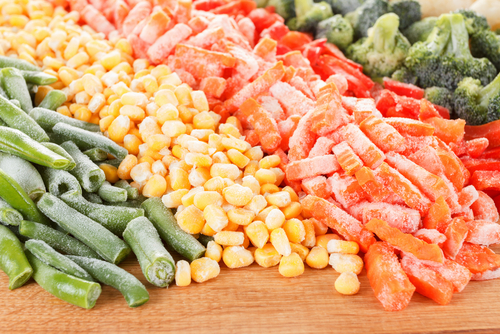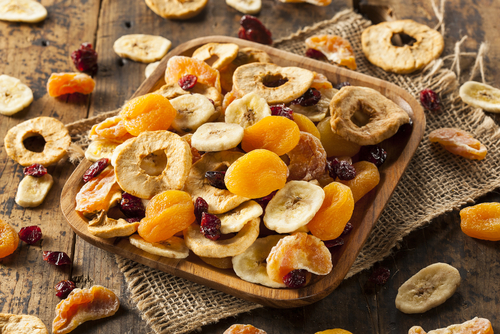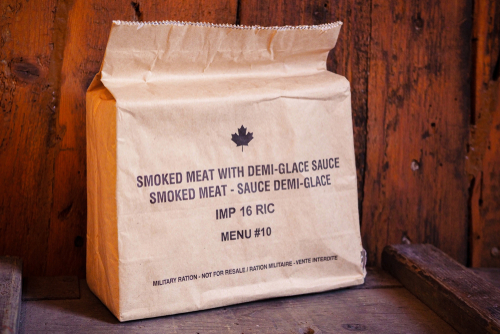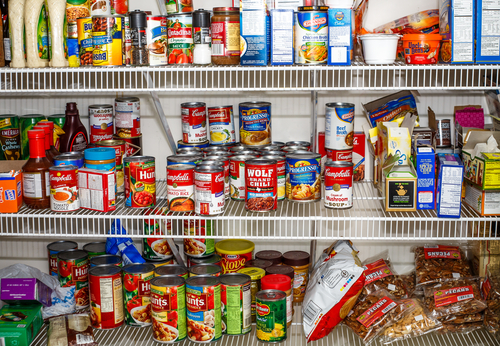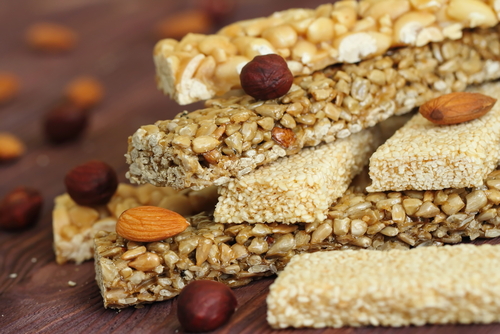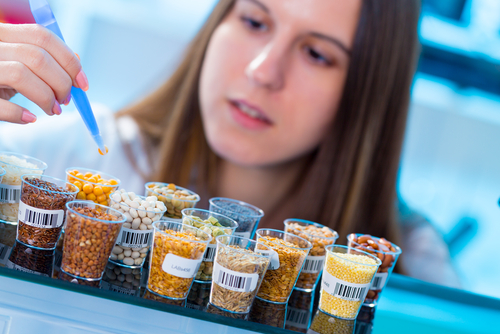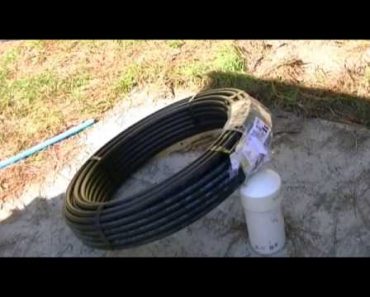A big part of your prepping life and emergency preparedness, in general, involves stockpiling food.
This is a mandatory activity that requires careful planning and budgeting. No matter how you look at it, food and water will always be your main concerns when things go south.
Picking the right survival foods for your pantry is a vital
step because you will rely on those foods to survive when grocery stores go out
of business. Each survival pantry should be well equipped to sustain the
owner(s) for more than 6 months, and the main keyword you should keep in mind
is “diversity.”
The foods you stockpile should satisfy even the pickiest of
eaters, and you should make everything possible to avoid appetite fatigue. In
today’s market, there are many survival foods and each has its advantages and
disadvantages. Regardless if you buy the foods or if you decide to make them at
home, you should be aware of these distinctive characteristics before you store
them in your pantry.
Freeze-dried food
In recent years, freeze-dried food has gained a lot of popularity in our ranks, and you can buy them already packaged for long-term storage. Some have invested in a freeze dryer and are making their own rations. Although not accessible to everyone, such an appliance will provide a good return of investment in the long run.
Advantages:
Freeze-dried goods have a long shelf life and, in my opinion,
are the ideal choices for a survival pantry. This food has low moisture content
and it can be reconstituted quickly. I can personally testify that freeze-dried
food is well preserved and the savor is much better compared to dehydrated
food.
I consider this an ideal solution for storing dry meat for extended blackout periods. In addition, the freeze-dried goods will retain their original shape, color, and texture, even after reconstruction. It’s much appealing and you won’t have to guess what you packaged, compared to traditional freezing, where certain foods can turn mushy.
Disadvantages:
For us, preppers, this is perhaps the most expensive food storage option, and our survival pantries cannot be fully stocked with such foods. If you have your own freeze dryer, you are one of the lucky preppers, but as I said, it is not available to everyone. Another disadvantage is that when you need to prepare freeze-dried food, you will need water, and as we all know, this can become a problem during an SHTF event.
You also have to consider that these goods are much bulkier
compared to their dehydrated counterparts and you will require more storage
room to make an extensive supply. Also, when bugging out, it might be difficult
to carry freeze-dried foods compared to other survival foods.
Dehydrated foods
Dehydrating food is an ancient food preservation method, and it was extensively used by our forefathers. With the invention of the classical oven and the modern food dehydrator, drying food has become a hobby for some. For the serious prepper, this is an excellent method to preserve food long-term and in case you are on a budget, you can improvise a solar dehydrator to reduce your operation costs.
Advantages:
Dehydrated foods are much lighter compared to other foods
since almost all the moisture content is eliminated. This food is waste-free
and due to its low water content, it can last for a few years without getting
spoiled.
It can be an ideal addition to any bug out bag and you won’t
feel the extra weight. It is perhaps the cheapest food storage alternative for your
pantry since it’s a simple DIY project and you can do it in the comfort of your
own home. Also, the operation costs are reduced since you can use a solar
dehydrator and produce from your garden.
Disadvantages:
Just like in the case of freeze-dried food, preparing dehydrated
food requires water, and in some cases quite a lot. As we all know, water could
become a luxury in a survival situation, so you will have to figure ways of
cooking the food with minimum water.
When it comes to visual appeal, these foods are not a pretty
picture and the young ones might refuse to eat them. When reconstructed, most
dehydrated foods will lose their original taste, and the nutritional value is
lowered compared to freeze-dried foods.
Meals ready to eat (MRE)
I’m a fan of this self-contained, field ration food that is packaged tight and neatly. Although initially, this food was bought by the United States military for its service members, this food is now available to everyone. A meal ready to eat contains almost everything for a complete meal (including dessert) and is packed with needed nutrients to sustain your body during harsh times.
What was once used in combat and other conditions where food
facilities were not available has now become a prepper’s favorite. If you want
to stockpile your pantry with MREs, I recommend doing so during the sale
periods.
Advantages:
These are very convenient since you have everything readily
available in one package. You don’t need cooking skills to prepare the food, and
you won’t have to rely on your survival improvised cooking skills.
Even though the texture is different, I assure you that these foods are very similar to your everyday meals. You won’t need water to cook the food and usually, no mixing or blending is required. These are ideal for a bugging in scenario or a grid-down event because they take up little space and you don’t need electricity to be prepared. You can eat them straight from the pouch and are a good “on the go” meal.
Disadvantages:
The main problem is that the taste and texture may not be
for everyone. There are as many taste preferences as there are people. Even
though it provides everything a meal should contain, I can testify that you
will often wonder if the meal labeled on the packages is the same thing you are
actually eating. If you can’t get various MREs (including from other countries),
you will have to deal with food fatigue at some point. Long-term consumption of
MREs is not recommended.
One thing that is worth mentioning is the high content of
additives that are added to MREs. Besides making them more expensive, some
people will not manage to hold them down. I recommend testing before buying
large quantities. If after 24 hours since your last MRE, you’re in good shape
and your stomach is not angry, you can consider them a good alternative for
your survival pantry.
Carrying MREs in your bug out bag can be difficult due to their
weight and packaging (the foil pouches can be punctured if not packed
properly).
Canned foods
America’s number one choice when it comes to food storing (regardless if someone is a prepper or not) remains canned food. Most people I know have a monthly budget carefully planned for purchasing canned goods. This is a cheap alternative to equip a pantry, and it can provide you with enough diversity to survive for a long time.
Advantages:
Canned goods provide a great variety, and you will avoid
appetite fatigue. It is a cheap alternative, and there are many sales you can
take advantage of. Canned food is packed securely so there is little chance
they will contain oxygen or moisture. You can find canned goods everywhere and
are a good option for the last emergency shopping trip.
Most canned goods have a reasonable shelf life of 3 years or
more if stored properly. Even so, you can rotate your supplies to make sure you
never run out of fresh ones.
The waste products of canned foods can be used for other
survival purposes. Metal will become valuable if you know how to work and
transform it. The juice content of most foods can be a good substitute for
water and you can use it for cooking (depending on the canned food).
Disadvantages:
Canned goods are heavier, and they take up a lot of storage
space. These foods cannot be frozen and there will be problems if the cans are
exposed to temperature variations. Also, exposing the cans to water or humidity
will lead to rusting, affecting in time the integrity of cans and the safety of
foods.
There are a lot of “unknown” ingredients in the cans and you
have no idea if all that is labeled on the can is all that can be found inside
of it. A diet composed of mainly canned foods will become a health risk.
Don’t count on canned food for your bugging out plan.
Besides being heavy, the cans can create noise when moving around and you will
signal your position to everyone in your vicinity. You will require a lot of
storage space if you rely mostly on canned goods.
Energy food bars
Initially designed for athletes and outdoor explorers, you can now find an energy food bar in every backpack. These are fast alternatives to a full meal and have become a favorite snack for many people. Some buy them, while others make them at home.
Advantages:
In the United States, energy food bars can be quite
inexpensive compared to other survival foods. These are engineered to provide
the right amount of calories for both adults and children. Based on the
different physical activities and accompanying elements such as weather,
duration and exposure, you might require more than one food bar.
These are ideal for bugging out scenarios, and the shelf
life of some of these food bars is outrageous if you ask me. You can stockpile
these when you are dealing with limited space and are mainly a good choice for
urban and apartment preppers. Energy food bars are compact and every kid will
love them since they have sugar and other types of ingredients that kids simply
love.
Disadvantages:
These energy bars have limited nutritional value and are not
recommended for your daily diet. Also, the taste is different from brand to
brand, and you need a lot of testing before settling on a certain brand.
Consider them as transition foods since they are not adequate for long-term
survival. Since you cannot heat or prepare energy bars, they cannot make a
decent substitute for a hot meal.
Lab food
In recent years there has been a surge in processed, engineered food or lab food if you will. You’ve probably heard of Soylent which is one of the pioneers in this field and perhaps the most advertised substitute meal. Developed initially by the Japanese market to cut the launch time and increase the productivity of mainly office workers, it has found is way in other civilized countries, including ours.
The idea behind this product (and many others like it) was
to avoid wasting time going out to eat or preparing/heating your food and
replace all the nutritional requirements of an average adult with a liquid and
powder (you mix the two or you mix the powder with water or milk).
Advantages:
These are good alternatives for those who can afford them
(although prices have gone down considerably). They are easy to store and you
don’t require a lot of storage space. They are ideal for urban preppers and
those who are always on the go. Available in both powder and liquid form, and
the powder form has an extensive shelf-life.
These engineered foods are FDA approved so we can assume
that they are safe for long-term consumption. If you are a vegan prepper (yes,
there are a few of them out there) these are a good alternative for you since
they have no animal products or byproducts.
Disadvantages:
The taste is not to everyone’s liking and it takes some time
to get used to it. I’ve tried it, but it’s not for me. There were articles at
some point claiming that these caused health issues for certain people since
they are not GMO and gluten-free, nor allergen-free. I can’t verify these
claims since I can tolerate gluten and I have no known allergies. You can’t
rely just on this type of food since you will require diversity.
Concluding
Preparing a survival pantry is a time-consuming activity that will eventually affect your family budget. This is why it’s important to research and figure out if the survival foods available out there are the proper choice for you and your loved ones.
As I always say, “Test, test and test some more!” before buying. I hope the information provided in this article will help you make a wise choice and help you figure out if your pantry is equipped with the proper survival food.


